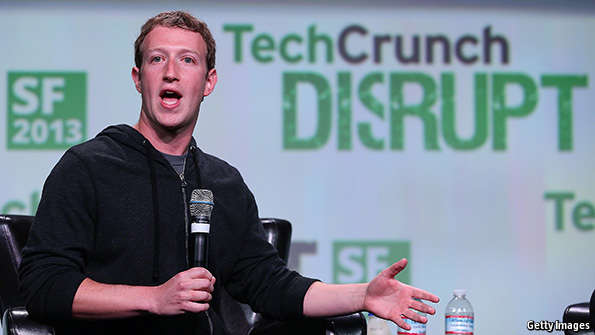The Economist explains

EVERY so often a management idea escapes from the pages of the Harvard Business Review and becomes part of the zeitgeist. In the 1990s it was “re-engineering”. Today it is “disruptive innovation”. TechCrunch, a technology-news website, holds an annual “festival of disruption”. CNBC, a cable-news channel, produces an annual “disruptor list” of the most disruptive companies. Mentioning “disruptive innovation” adds a veneer of sophistication to bread-and-butter speeches about education or health care. But just what is disruptive innovation?
The theory of disruptive innovation was invented by Clayton Christensen, of Harvard Business School, in his book “The Innovator’s Dilemma”. Mr Christensen used the term to describe innovations that create new markets by discovering new categories of customers. They do this partly by harnessing new technologies but also by developing new business models and exploiting old technologies in new ways. He contrasted disruptive innovation with sustaining innovation, which simply improves existing products. Personal computers, for example, were disruptive innovations because they created a new mass market for computers; previously, expensive mainframe computers had been sold only to big companies and research universities.
The “innovator’s dilemma” is the difficult choice an established company faces when it has to choose between holding onto an existing market by doing the same thing a bit better, or capturing new markets by embracing new technologies and adopting new business models. IBM dealt with this dilemma by launching a new business unit to make PCs, while continuing to make mainframe computers. Netflix took a more radical move, switching away from its old business model (sending out rental DVDs by post) to a new one (streaming on-demand video to its customers). Disruptive innovations usually find their first customers at the bottom of the market: as unproved, often unpolished, products, they cannot command a high price. Incumbents are often complacent, slow to recognise the threat that their inferior competitors pose. But as successive refinements improve them to the point that they start to steal customers, they may end up reshaping entire industries: classified ads (Craigslist), long distance calls (Skype), record stores (iTunes), research libraries (Google), local stores (eBay), taxis (Uber) and newspapers (Twitter).
Partly because of disruptive innovation, the average job tenure for the CEO of a Fortune 500 company has halved from ten years in 2000 to less than five years today. There is good reason to think that the pace of change will increase, as computer power increases and more things are attached to the internet, expanding its disruptive influence into new realms. Google promises to reinvent cars as autonomous vehicles; Amazon promises to reinvent shopping (again) using drones; 3D printing could disrupt manufacturing. But perhaps the most surprising disruptive innovations will come from bottom-of-the-pyramid entrepreneurs who are inventing new ways of delivering education and health-care for a fraction of the cost of current market leaders.
Dig deeper:
Freelance workers will reshape the future of companies (Dec 2014)
Uber risks a consumer backlash over its tough tactics (Nov 2014)
Amazon has upended industries and changed the way the world shops (June 2014)
No comments:
Post a Comment